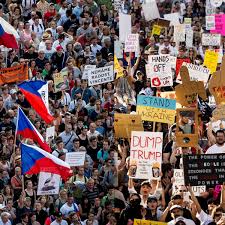The Rise of Donald Trump Protests Across the United States

Introduction
The recent wave of protests surrounding former President Donald Trump has garnered national attention, highlighting a deeply polarized political landscape in the United States. These protests, which erupted in various cities, are not only a response to Trump’s legal challenges but also reflect broader societal concerns regarding democracy, governance, and public policy. Understanding the reasons behind these protests is crucial in grasping the current political climate.
Protests Erupt Across the Country
In recent weeks, demonstrations have taken place from coast to coast, with notable events in cities like New York, Los Angeles, and Chicago. These protests were largely sparked by Trump’s indictment on multiple charges, including financial irregularities and attempts to overturn the 2020 election results. Organizers, primarily from activist groups opposing Trump’s agenda, have described the protests as a necessary assertion of democratic values and accountability in leadership.
On April 4, 2023, following Trump’s arraignment, thousands of protesters gathered outside the Manhattan courthouse, demanding justice and transparency. Many slogans echoed sentiments about protecting democracy and disavowing Trump’s influence. Some demonstrations also featured counter-protests from Trump supporters, which escalated tensions in several locations.
The Demographics of the Protests
The participants in these protests represent a cross-section of American society. Younger citizens, particularly college-aged students, are prominently featured, showcasing a growing engagement with political activism. Moreover, many organizations, such as the Women’s March and various civil rights groups, have mobilized their members, emphasizing the protests’ significance in advocating for civil liberties.
Implications and Future Outlook
The protests surrounding Donald Trump underscore a critical juncture in American politics. Analysts suggest that these demonstrations could considerably impact future elections, especially as both sides of the political spectrum become more animated. If the legal proceedings against Trump evolve further, it is likely that the intensity and frequency of protests will continue to rise.
As we head into the 2024 election cycle, the protests serve as a barometer for public sentiment and political engagement. The outcome of Trump’s legal battles may shape not only the electoral landscape but also influence how citizens interact with their government.
Conclusion
In conclusion, the Donald Trump protests signify more than a reaction to an individual’s legal issues; they reflect wider societal anxieties about democracy, representation, and the future of governance in the United States. As these protests persist, they remind us of the power of civic engagement and the importance of remaining vigilant in the defense of democratic principles.









